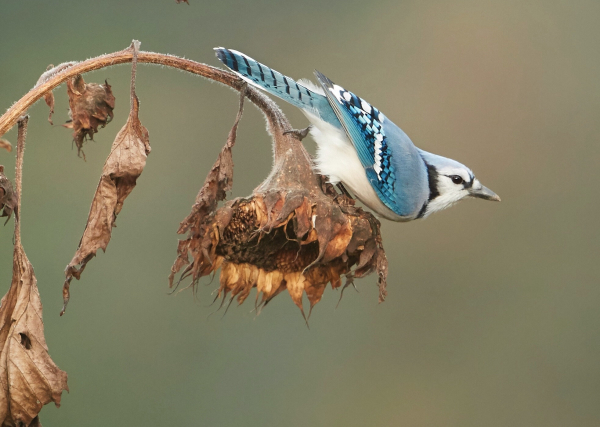 A Blue Jay feeding at a garden sunflower that was grown and left in place for birds was photographed by Kim Caruso, the Judges
|
 A Blue Jay feeding at a garden sunflower that was grown and left in place for birds was photographed by Kim Caruso, the Judges
|